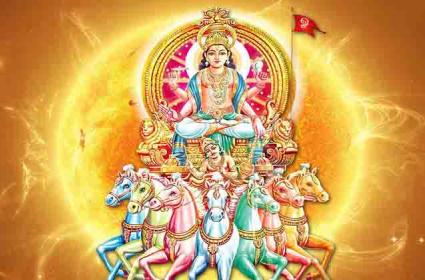Ratha Sapthami 2019 Date, Significance

Ratha Saptami is one of the most important Hindu festivals which falls on the Shukla Paksha Saptami (seventh day) in the month of Maagha.
Usually this festival is observed somewhere between the months of mid-January to February on the second day following the celebrations of Shri Panchami or Vasant Panchami. Since it falls in the month of Maagha, it is also known as Maagha Saptami or Maagh Jayanti.
Ratha Saptami is devoted to Sun God or Lord Surya and is also popularly known as ‘Surya Jayanti’. It is believed that Lord Surya enlightened the whole world on the day of Ratha Saptami, hence it is also celebrated as the birth anniversary of Surya Bhagwan.
As per the Hindu religion, Ratha Saptami is treated very auspicious with Lord Surya referred as the God of Health and is worshipped for good health and longevity.
As per the symbolism, Lord Surya, who is seated on his golden chariot (ratha) driven by seven white horses (representing seven colours of rainbow), is steering towards the northern hemisphere, in a north-easterly direction.
Ratha Saptami is considered as a symbolic change of season to spring and the begin to the harvesting season. Indian farmers consider this, a promising start of the New Year. The temperature across South India witnesses a gradual increase and paves way for the festival of Ugadi or the Hindu lunar New Year day.
Various temples have been built across India in honour of Lord Surya and on the day of Ratha Saptami, celebrations and special poojas are held.
The festivities at Tirumala Tirupati Balaji Temple are prominent during Ratha Saptami. Others states which hold special significance for this festival include Maharashtra, Tamil Nadu, Karnataka and Andhra Pradesh.
Rituals observed during Ratha Saptami -
Devotees take a holy bath, called the Ratha Saptami Snan before sunrise (Arunodaya time) on the day of the festival. The reason to take the sacred bath is considered that a person will be free from all illnesses, ailments and be bestowed with good health. In this sense, Ratha Saptami is also popularly called as ‘Arogya Saptami’. Devotees in Tamil Nadu take this sacred bath using Erukku leaves.
After the bath, devotees offer ‘Arghyadan’ (water from a small kalash) to Sun God in Namaskar Mudra at the time of sunrise in the standing position. This ritual is also performed 12 times along with chanting twelve different names of Lord Surya each time.
On Ratha Saptami day, keeping a fast is recommended as it is believed that it relieves one from all types of sins.
Women in many households sketch the images of Lord Surya along with the chariot as a welcoming gesture. Milk is placed in mud vessels and boiled facing the sun. Later, it is used to make the ‘Paramannam’ Bhog (sweet rice) which is offered to the Lord Surya.
This year, Ratha Saptami is scheduled to be observed on February 12. The Tirumala Tirupati Devasthanam (TTD) is now gearing up to host the big festival. Elaborate arrangements are being made for the grand one-day Brahmotsavam, to be held in Tirumala. The presiding deity of Lord Malayappa Swamy along with his divine consorts Sridevi and Bhudevi will be taken to a celestial procession on seven different vahanams in Thiru Mada streets. The TTD authorities stated that the devotees who throng the temple to get a glimpse of the Lord on different Vahana sevas are set for a visual experience.
Also Read: Magha Saptami: Devotees Throng Chandrabhaga Near Konark For Holy Dip




















